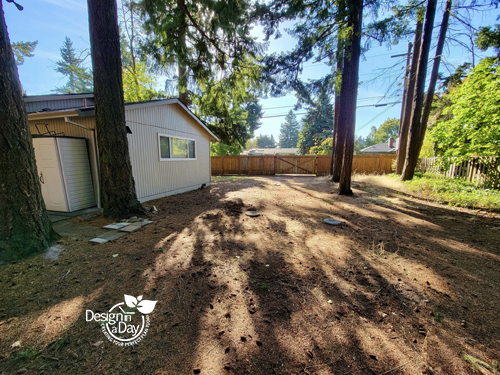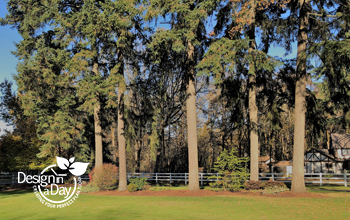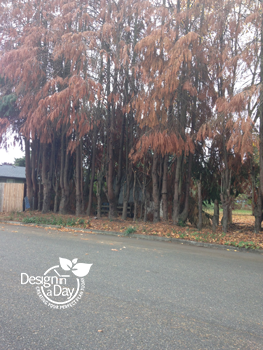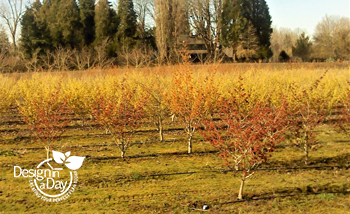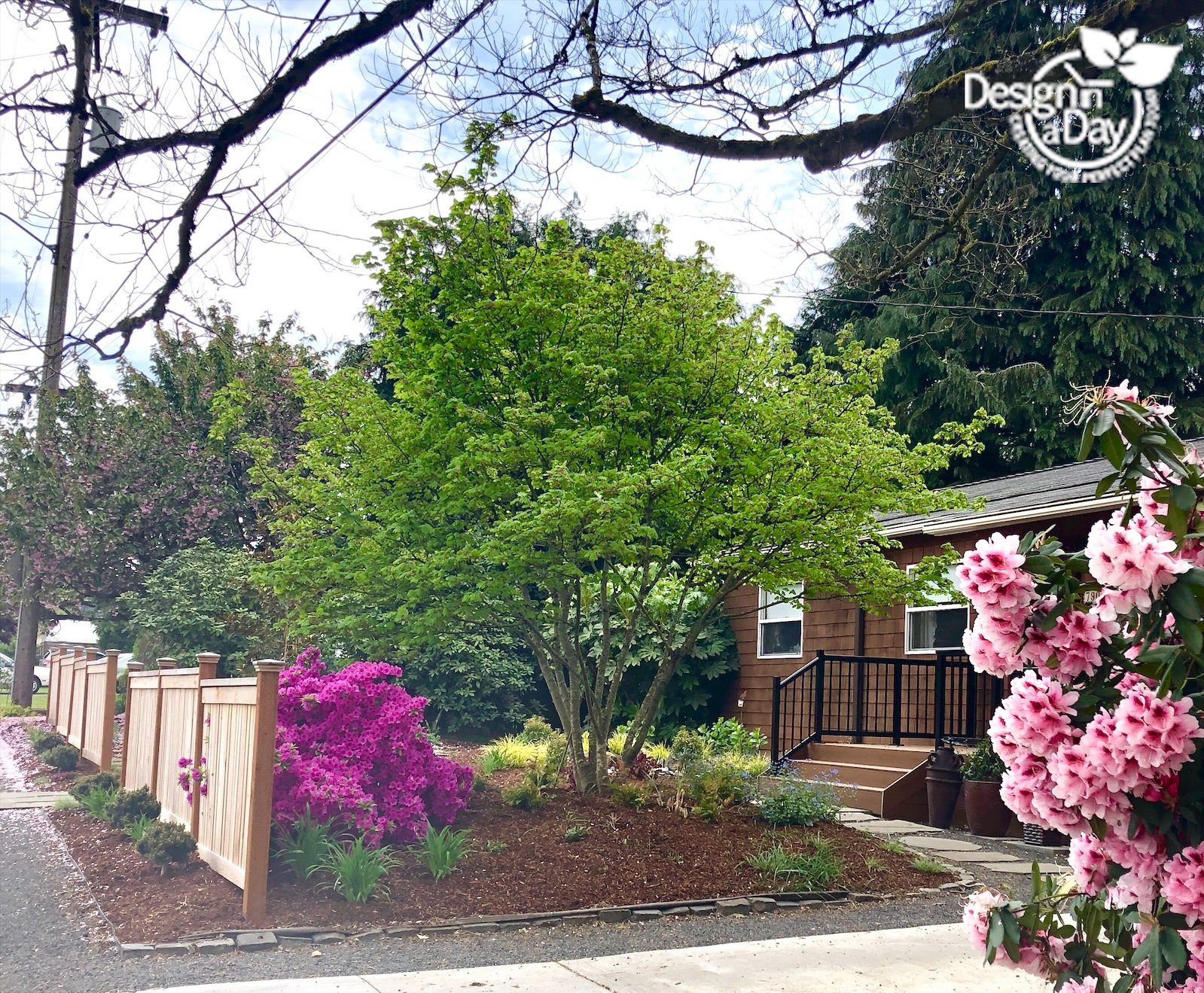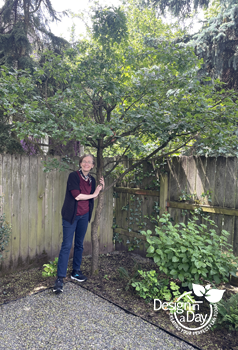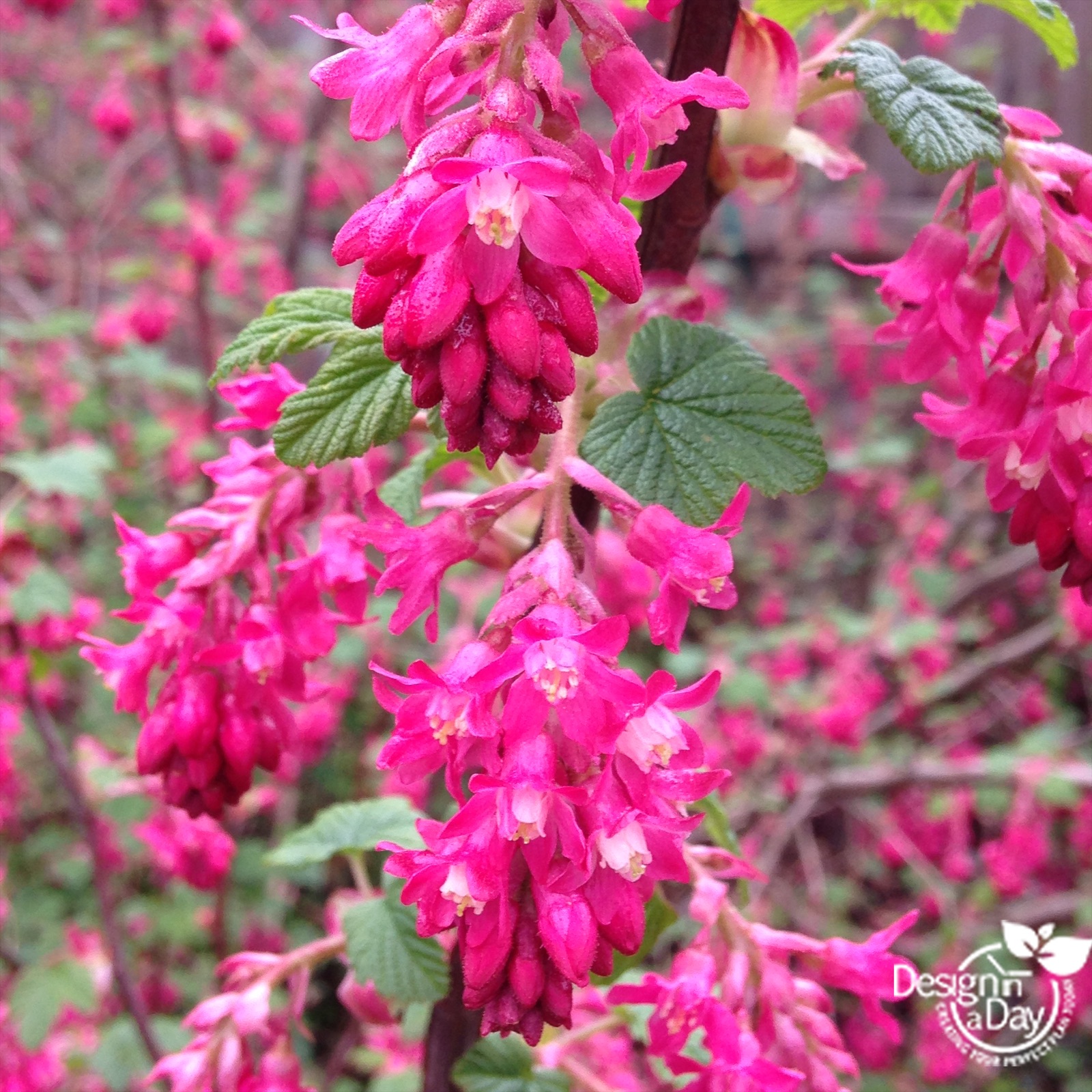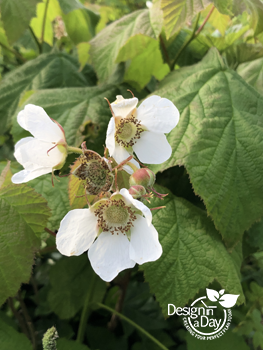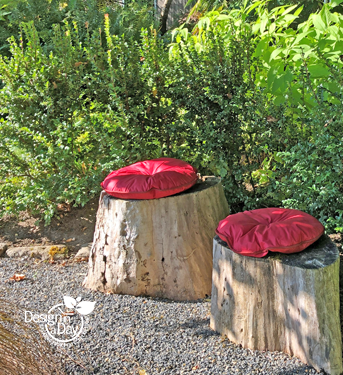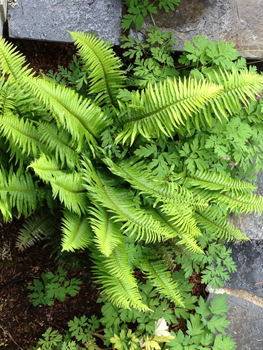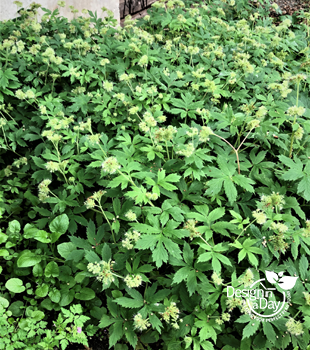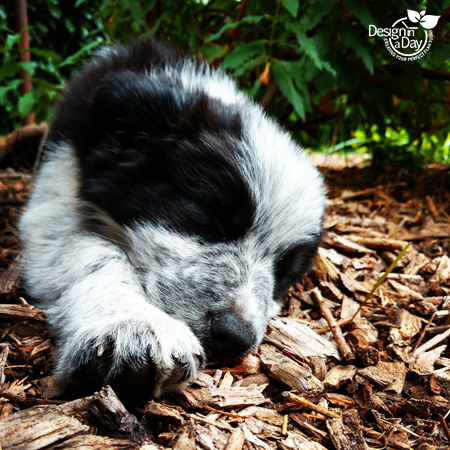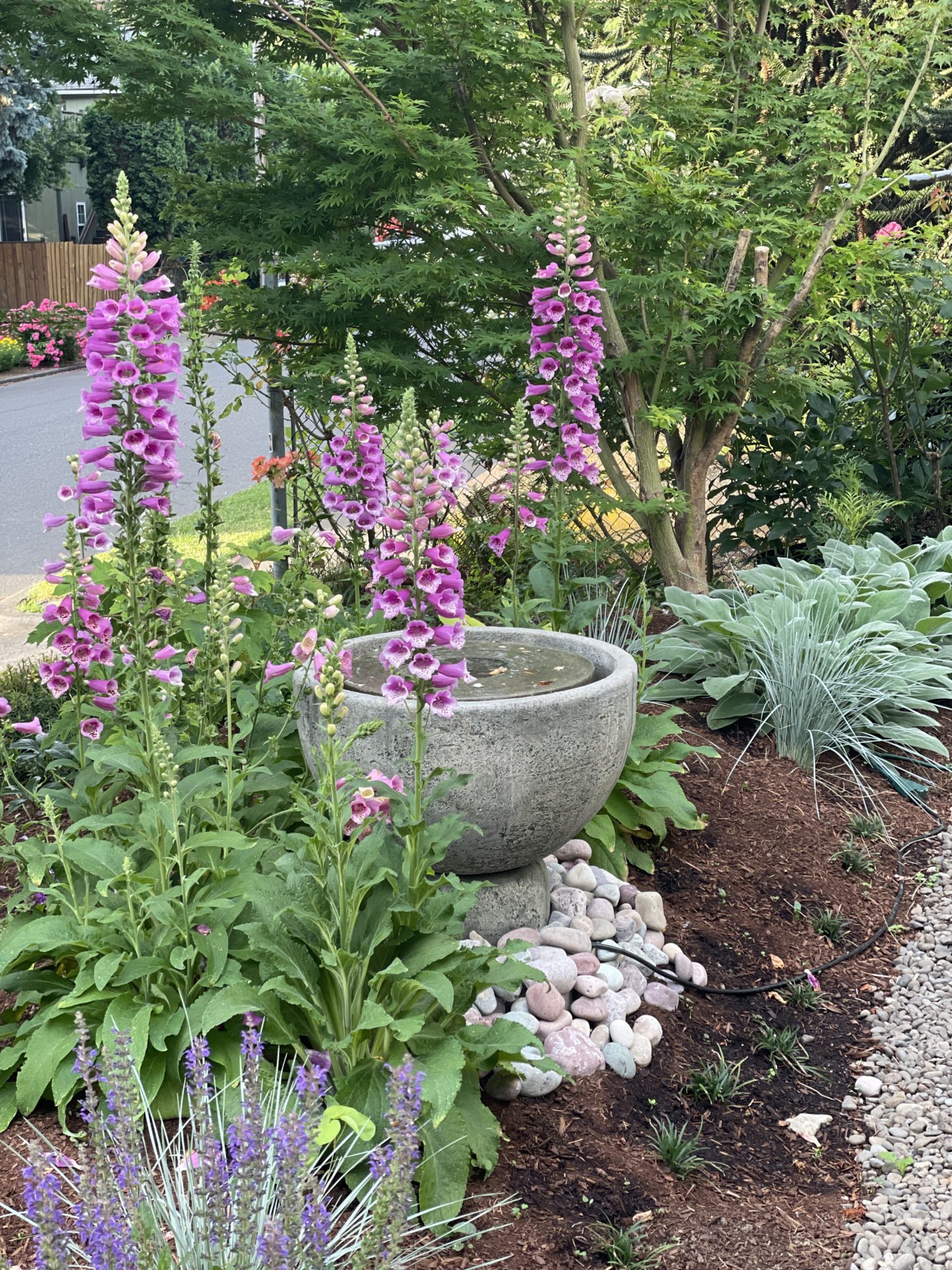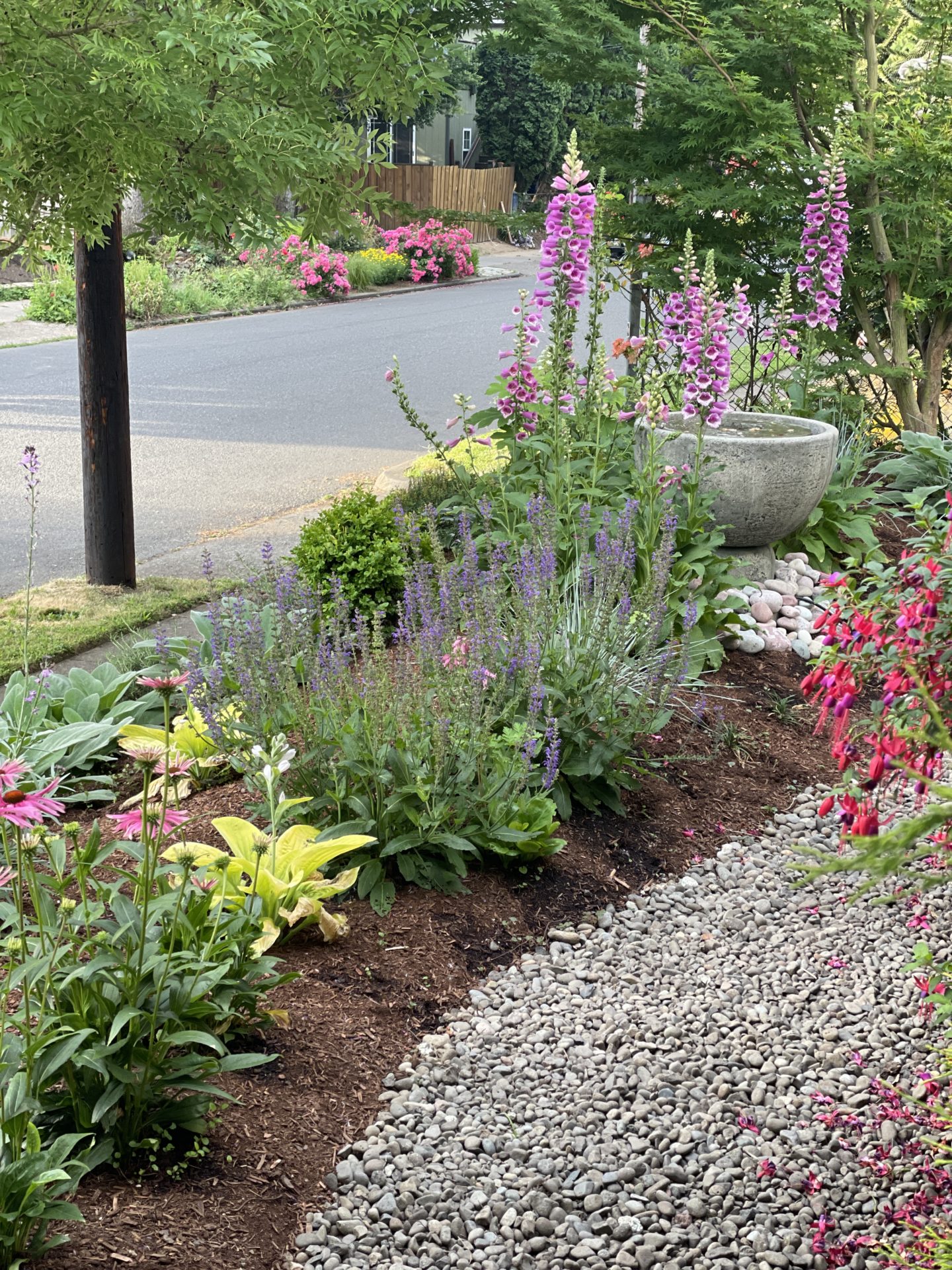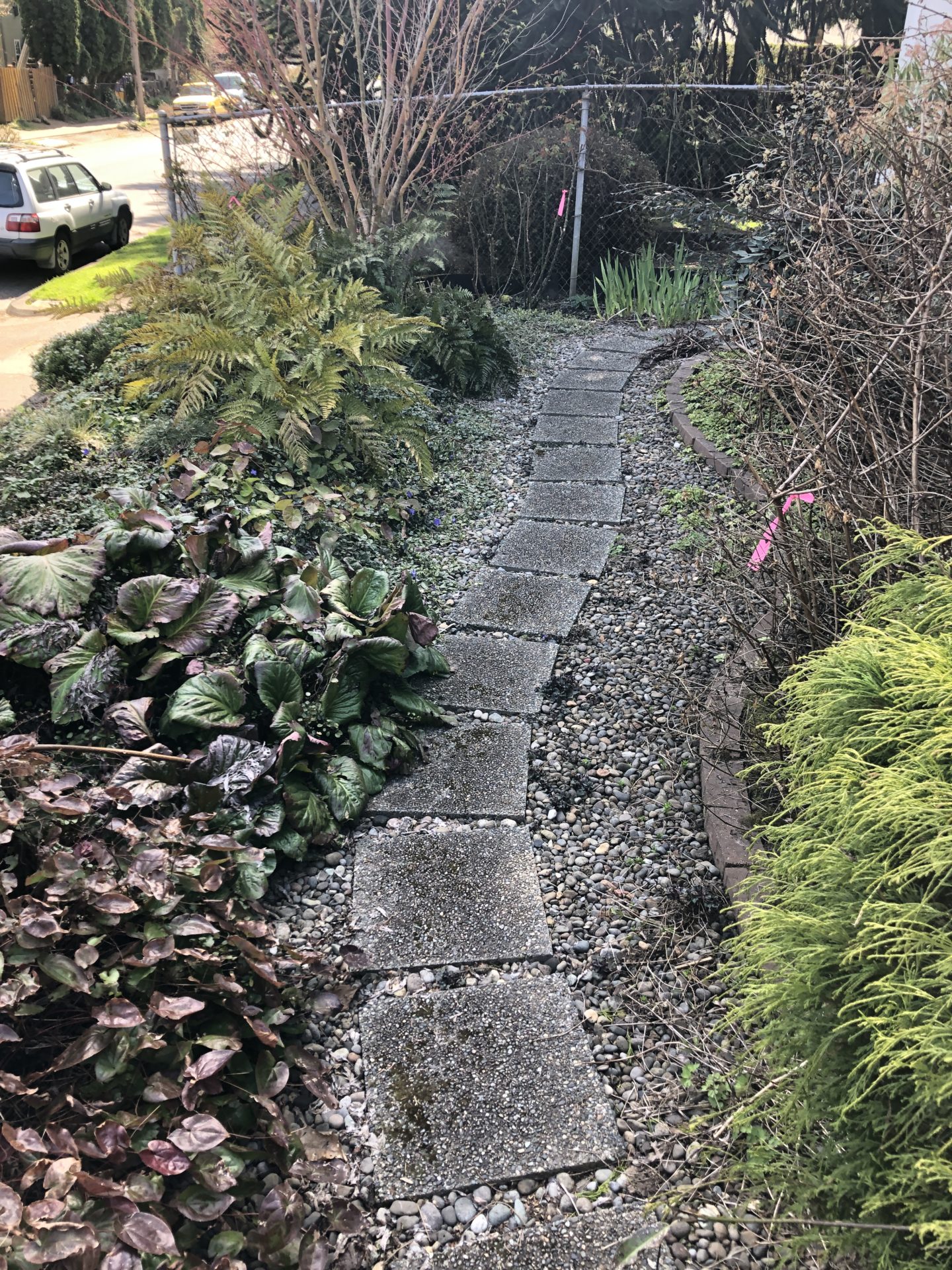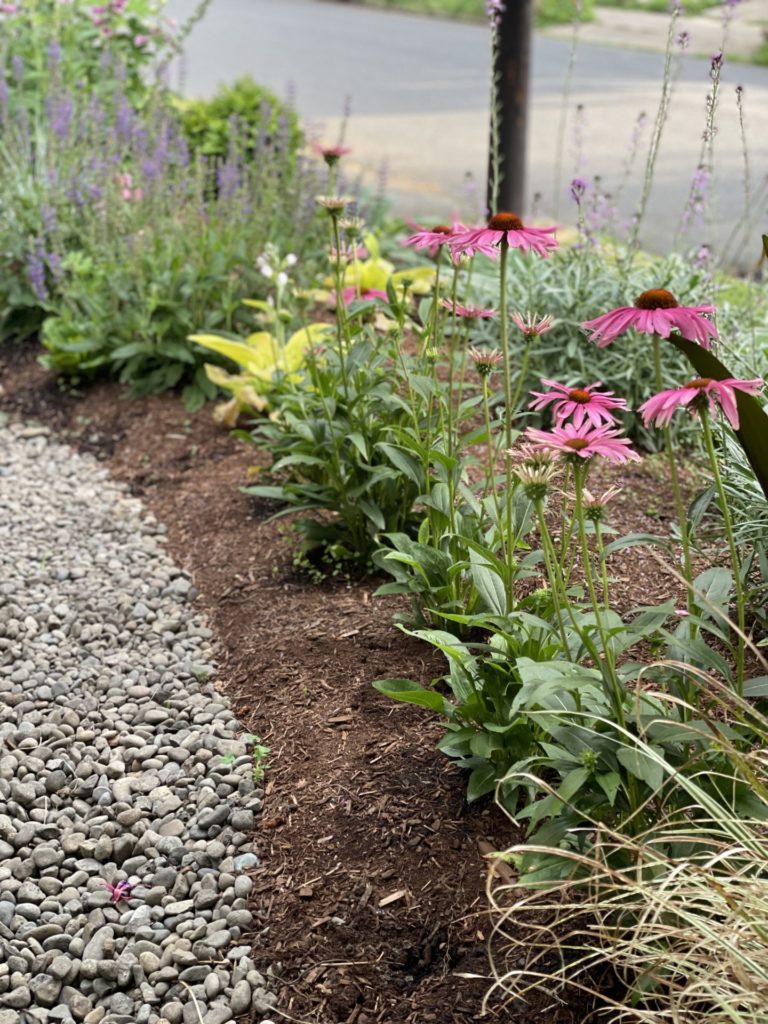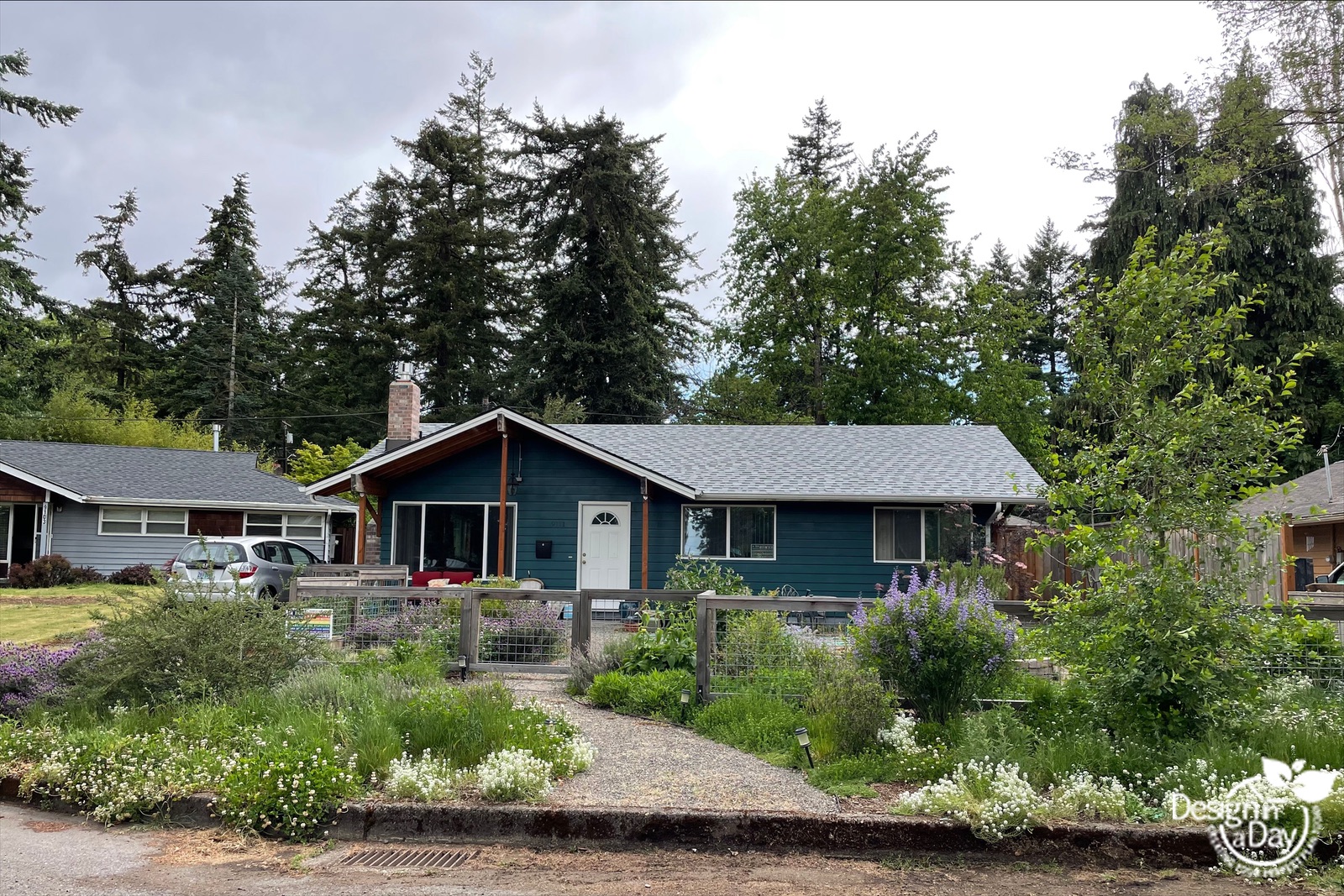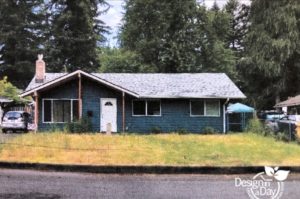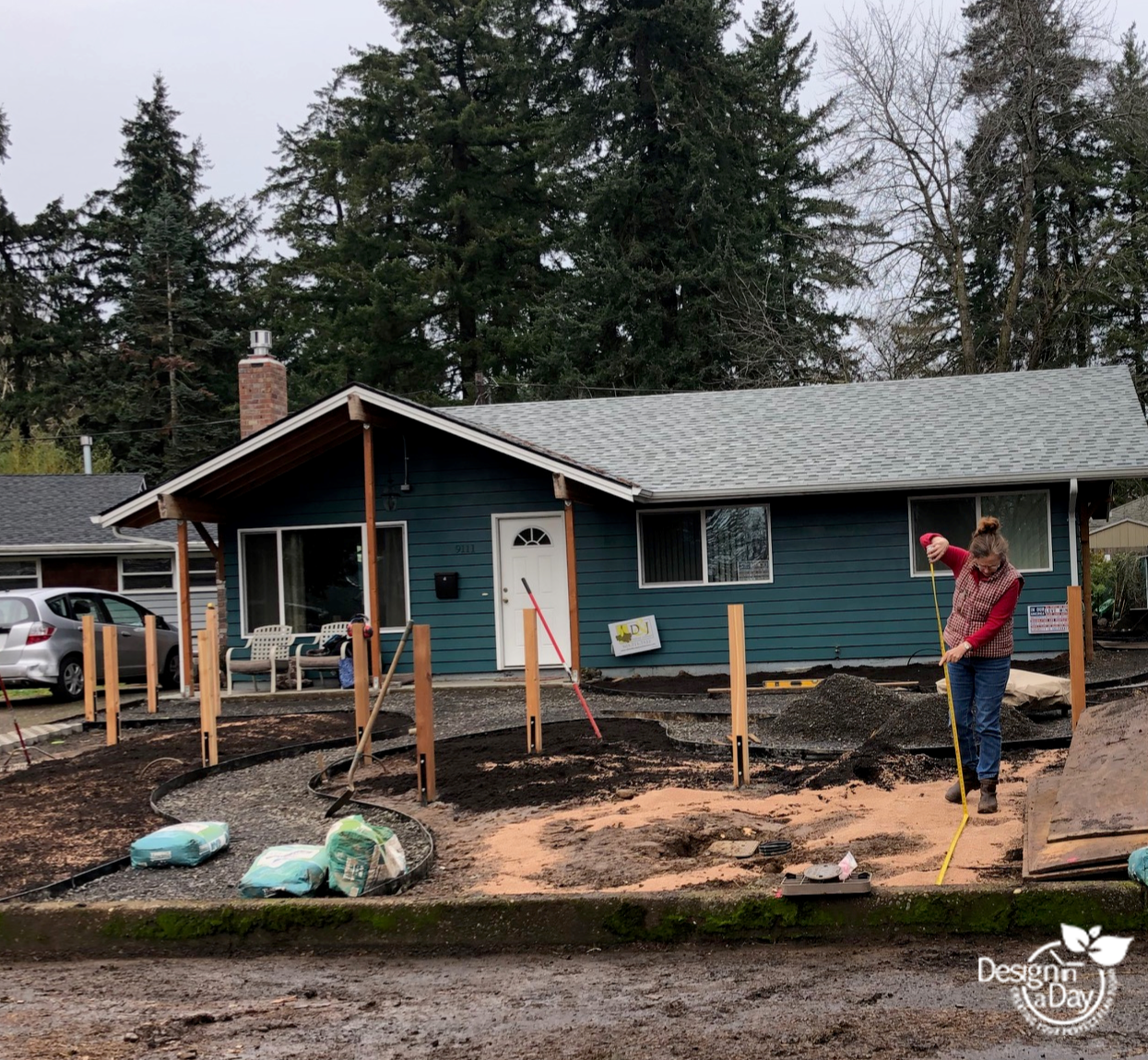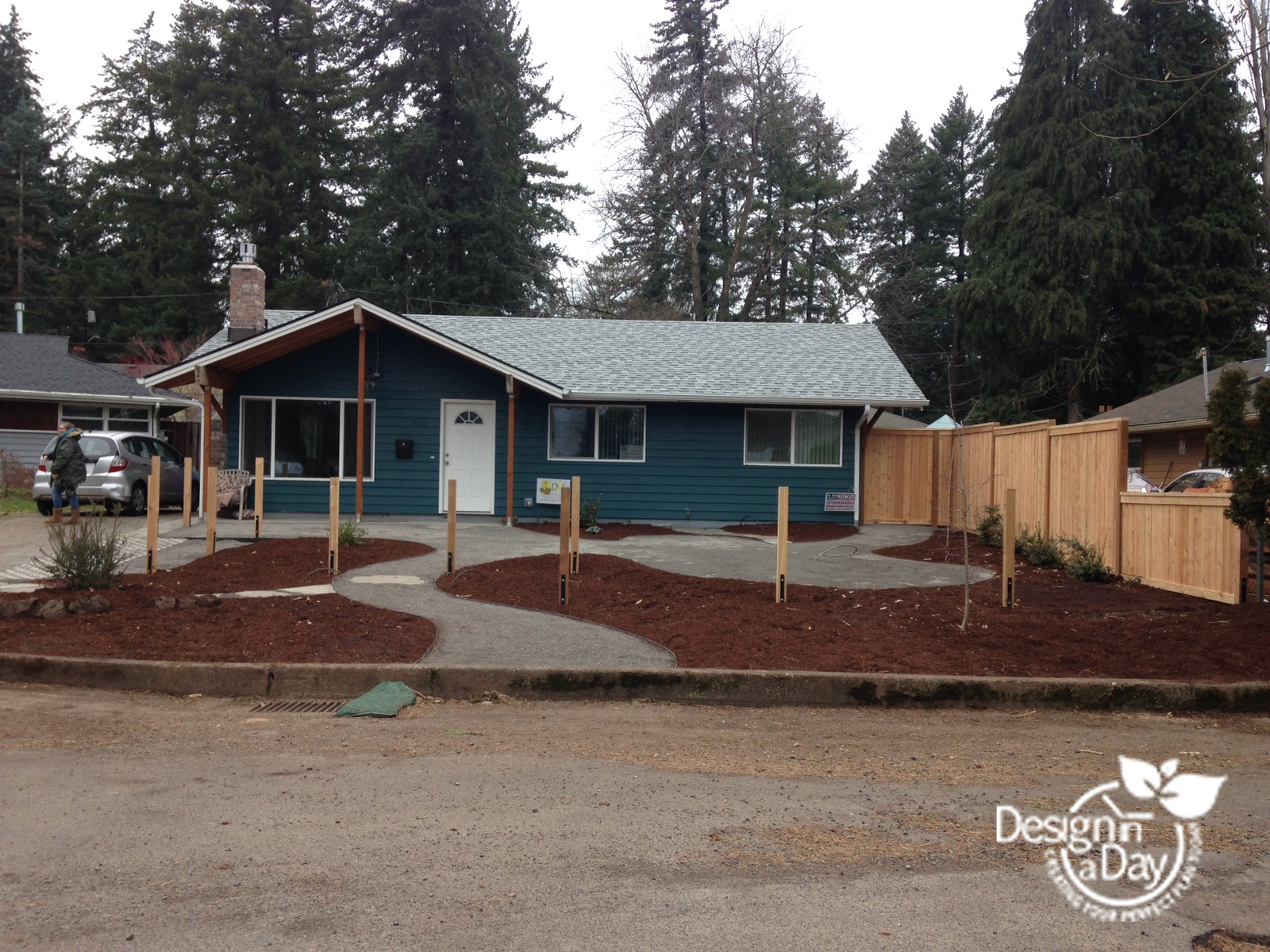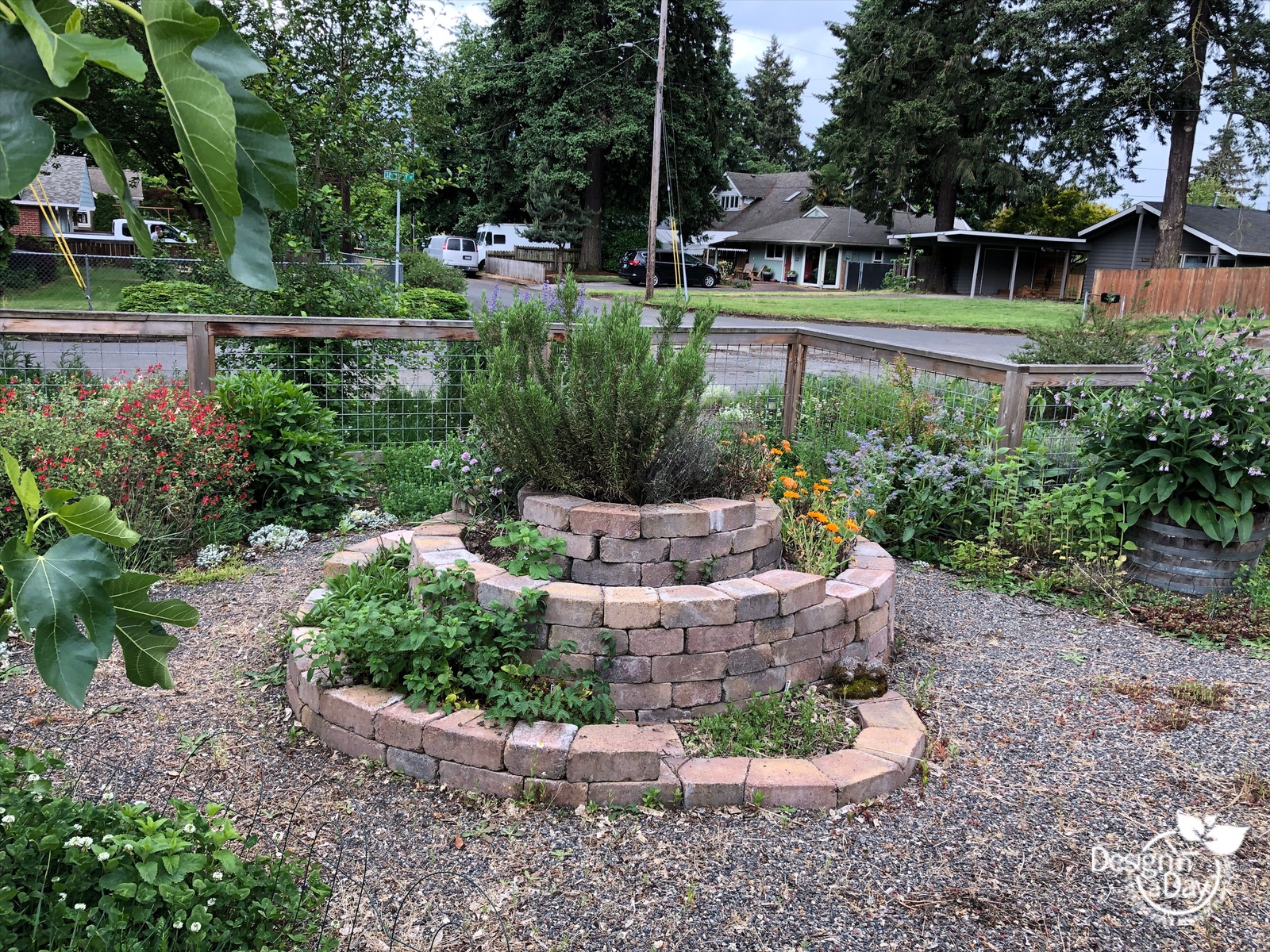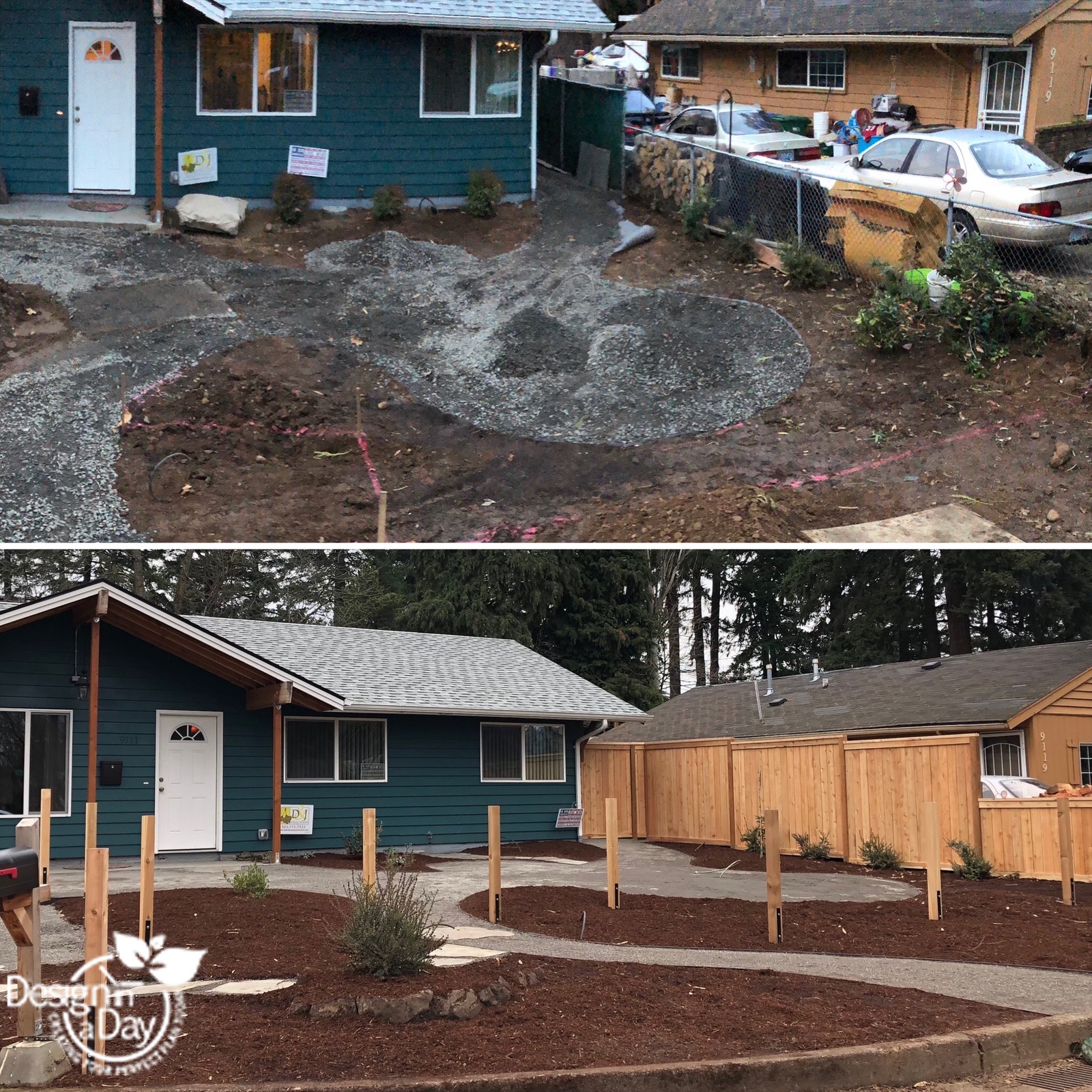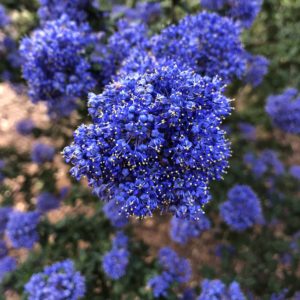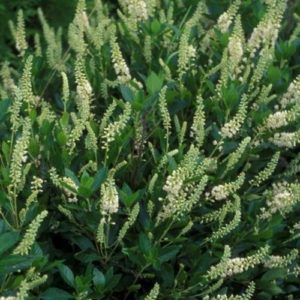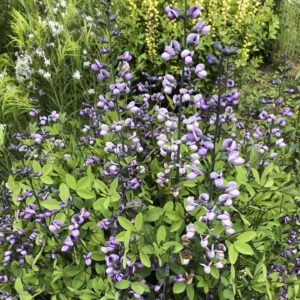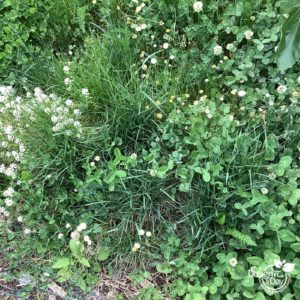Adding Native Oregon Plants to the Trees
My friend Larry bought a property with huge Douglas Fir trees and he wants to create landscape for wildlife in the Pacific Northwest. He wants a back yard forest. He sent me a photo of his new property’s back yard after I offered to give him a few tips.
Landscape Designer and Certified Arborist Collaboration
So Larry here’s my advice for your first step; you will get your back yard forest better, faster and easier with a landscape designer who works with arborists. Because of all those huge 60′ tall fir trees your next step is to have an arborist evaluate the trees, talk with you and give us a report on the health of your trees.
Why work with an arborist before we create your design? We don’t want to design your back yard forest landscape around a large existing tree that will need to be removed later. Such a waste.
Existing Trees Need Evaluating
Get an arborist who will consult and evaluate your trees – not just come by for a sales call. If you have to pay for this service, you will know for sure it is not a sales call. Some arborists only want to assess whether they can remove or prune any of your trees. It’s true that we want to know if they think any of the trees should be removed or need restorative pruning but we want to know so much more.
Arborist Site Evaluation
Here are a few questions I would ask just from looking at your photo: I see there is a double gate for vehicles near the trees. I would wonder if the soil is compacted under your trees because people parked trucks under your trees?
Has excess soil been added over your trees root zone? Adding soil (or even too much bark chips) over the roots of mature trees could be a problem. Did someone trench near your trees to add a septic or an irrigation system? Do you plan to add a garage or outbuilding near the trees in the future? An arborist can see the problems and advise you on how to mitigate some of the damage done.
General tree care: get their recommendation on how much to water your Doug firs, and other native trees. Find out how often and how much water needed, when to start watering each year and when to stop. Looking on line you will read conflicting information about watering native conifer trees so get your information directly from the arborist.
Stress on Native Trees Due to Climate Change
Ten years ago we never ever summer watered Douglas fir trees. Due to climate change we have had multiple years of too dry in the spring and even some odd winters where it did not rain enough for our trees. This has severely stressed many of our native trees. New recommendations I have heard are to give regular but not too frequent deep watering. Homeowners need a precise watering plan so they know what to do and when to do it. We want slowly applied water so it gets down deep into the soil rather than run off into a low spot somewhere. That’s why I favor the drilled emitter tube or a homeowner soaker/ooze type of hose and why I do not recommend using overhead sprinklers for watering anything except lawn. Ask the arborist how you should water your trees and write it down. Here’s a money saving tip: A written report from a certified arborist costs a lot of money and a verbal report is much more affordable.
Fir Tree Compatible Landscape Design
Hey Larry, did you think I would say hire a designer who knows about landscaping with native plants and knows what kind of plants are compatible with Douglas Fir? I’m a residential landscape designer with 20 plus years in Portland. I am accustomed to creating designs that are compatible with big trees and that is why I know so many arborists as well. We create designs that surprise our clients with our downright clever use of space, the way we add functional areas, and create paths that beautifully integrate the entire property. We take your ideas and make them useable and brilliant and the plants we suggest will meet your criteria for forest community and low maintenance.
Best Timing for Planting Natives
Don’t Let Your “Do it Now!!!” Energy Add Pressure
And it’s hard to wait. I know you just moved in last fall Larry and now spring is on its way. You are wanting to get it going right? If you are not ready to start now say early February with your design and decisions made….. consider getting everything else ready and wait ’til fall for most or all of your plantings. You will not lose valuable growing time by planting in the fall. Your new trees planted this late spring or (worse in summer) will be stressed by summer heat (even if we do not have a heat dome June 2021) and they won’t grow much. Success will be keeping the leaves or the needles on the tree. Or you could plant the same tree this fall say in October and next spring the fall planted tree will be bigger even though you planted it 5 months later and be less stressed by summer because it has an established root system that grew over winter. So don’t feel you are losing your opportunity for a faster growing tree if you wait ’til fall.
Creating Larry’s Shady Forest One Plant Layer at a Time
Here are some of the plants I’d consider (organized by the layer, tallest, 25′, then 15′, then 7′, then 3′ and under).
So Larry since your existing trees are limbed up (no branches for the first 20’) it’s going to be awhile before you have your shady forest. This means your initial plantings need to be plants that can handle quite a bit of sun now but later on will thrive in dappled shade.
I would design your hardscape and layout plant first so you know where paths and planting areas will be. Next up is your planting plan starting with 20′ to 25′ tall under story trees. These trees will make shade for your forest floor plants. Cascara frangula purshiana-Cascara buckthorn, Malus fusca-Pacific crabapple, and Amelanchier alnifolia-Pacific Serviceberry are also great bird and pollinator plants. Native vine maple works too but will have scorched leaves for a few years in this kind of sun. It will become accustomed to more sun and then later also thrive in the shade of the big trees. Situate vine maple so it gets some afternoon shade from those “way up in the air” Doug Fir branches.
Native Oaks are the New Cool Climate Change Trees
Our beloved Oregon White Oak grows quickly to 15-20 feet and then slows down as it grows to over 100′ tall. (Which Larry you and I will not be around to see). I also love to use a smaller oak tree, our native evergreen Canyon Live Oak (Q. chrysolepis). While it’s native to southern Oregon it does well in Portland and it is much faster than this southern California small oak called ‘La Siberia’. Quercus greggi ‘La Siberia’ is very very attractive and tough and available locally at Treephoria.com. Yes I promised not to go into such detail but I am a sucker for oak trees.
The Next Understory Layer Includes Native Rhododendron
The next layer can be shrubs that grow 10′ to 15’ tall. I tend to call these plants “shrees” as they mature into small trees.
Native Plant Rhododendron Macrophyllum-Pacific Coast Rhododendron
Larry, I know you especially like our native rhododendron which is what started this conversation. So our evergreen Pacific Coast Rhododendron can get 10′-15′ in improved soil. It can take quite a bit of sun but no boggy wet soil. When it is older it will also tolerate more shade.
Our very fragrant smaller Rhododendron occidentale-Western Azalea, is listed for sun and loses it’s leaves in winter so not evergreen. The sweet fragrance can waft quite a distance in early spring. I’d plant it on the edge of your forest area where it will always get more sun. Clients often say its their favorite fragrance.
Wildlife Garden Design – Provide for Birds and Pollinators with these Plants
Here are just a few native plants (in the 10′ to 15′ height) to help you garden for birds: Ribes sanguineum, Pacific Current, Holodiscus Discolor-Ocean Spray, and Vaccinium parvifolium-Red Huckleberry. And you will want Oemlaria cerasiformis-OsoBerry or Indian plum (which can scorch in full sun so doesn’t look so great in late summer) because it is such an important wildlife plant. Don’t let its mid summer rough appearance keep it from your landscape. It’s worth it. Even this east coast native, Cornus Mas-Cornelian Cherry has very early flowers, low water needs and is so great for pollinators and later in summer has fruit for birds.
Consider one of the many varieties of Arctostaphylos-manzanita or Ceanothus. These plants should be placed where they will get lots of sun and should not be watered in the summer or fall. They are great for wildlife providing food for birds including over wintering hummingbirds and important insects.
The Next Layer 5′ to 7′ Native Shrubs
Native Vaccinium ovatum-evergreen huckleberry is one of my favorites. It’s shorter in lots of sun and taller in shade so it’s perfect for you. Next on my list would be various native Rubus plants. Rubus spectabilis-Salmon Berry is taller and the flowers are a shocking hot pink in early spring and is beloved by our native bees. Rubus parviflorus – Thimble berry is early season bumble bee food and makes a great 3′ to 4′ high hedge if you want one somewhere. Both of these plants have short thorns. They take a lot of sun so plant on the edges. My mom grew up on the Oregon Coast and she loves Thimble Berry to eat fresh. It’s a little surprise tart-ish flavored berry.
Our native salal at 3’ to 5’ can be hard to get established. But don’t get discouraged. Several of your plants may croak for no reason you can discern but the ones that survive will spread. They will be shorter in the sun and taller in shade, sometimes 5′ tall in shade. I have a client who makes a gimlet and always adds Salal berry.
Ground Layer Native Plants 1′ to 3’ Tall
Sword fern is a low maintenance native plant for sun or shade and fills planting beds fast
You could plant a bazillion sword ferns and some Gaultheria Shallon-Salal under fir trees and call it done. Polystichum munitum-Sword Fern is good to go in sun or even fairly deep shade. It’s the primary fern in the Willamette Valley so it’s the one I grew up with. Unlike other native plants (who can be fussy about soil), Sword Fern will grow in horrid clay sub soil as well as the good stuff! They handle fir needle debris as well as leaf load in the fall so you don’t have to spend your time removing every leaf to keep the ferns thriving. Don’t you want a garden where you can leave the rake in the garage? Plants that work well with sword fern are numerous but here’s an idea you may not have thought of; let’s use easy to germinate native plant seeds.
Seeds are Perfect for Filling in a New Planting Area Quickly
I love using these native self seeding annuals and perennials to fill in my ground level while waiting for the larger plants to grow. I sow these native plants by seed in fall, in late winter, and in the spring to get them going strong. These are my favs: Oregon native phacelia nemorosa for both sun and shade. The California native phacelia flower is more attractive but is for the sunniest areas along with an Oregon native called Gillia capitata. After your shade deepens you will have fewer of these last two. These self seeding native plants provide abundantly for pollinators and they will do a lovely short and long term job of covering your ground. After your larger trees and shrubs get planted these self sowers will fill the spaces left available.
Another plant is Tellima grandiflora-Fringe Cup (which you will recognize Larry from living in Oregon most of your life) and it takes a lot of sun but will settle into shade nicely. It is a perennial and you can buy it as a plant or go for seeds too.
Spread Multi Species Wood Chips To Put Life Into Your Soil
Larry, here’s a cool thing you can do now. Get a load of diverse species wood chips from a tree service. Ask for a mix of different kinds of trees. You want diversity. Spread them at no more than 2” above your existing grade in future planting areas or everywhere for now if your yard is a blank slate. As the chips break down they will start putting life back into your soil that the trees need. By life I am talking about fungi and making a place for diverse micro organisms. These good bacteria are an important investment in the health of your plants. Tip: Only add 2” of any kind of chip over tree root areas. It has to do with oxygen ratios in the soil and your trees tiny root hairs. Not enough oxygen and the little tiny roots which process most of the water for the tree die off…not good. When in doubt-check with your arborist about how deep to apply chips around trees. Many gardeners replenish these chips every few years around their native plants.
The only thing I don’t like about these arborist multi species wood chips is that they are often so chunky that they are hard for some dogs to run on (ankles and knees). I wouldn’t want these chips to be the only place where dogs can play and run around.
For a dog friendly surface I prefer playground cedar chips (Northwest Play Fiber or similar) for attractive woodsy looking paths that last and are easy to walk on.
Wildlife Garden Design or Landscaping with Native Plants – Contact us
So Larry, thanks for inspiring me…. I wanted to give you some tips for how to achieve your back yard forest and for anyone interested in landscaping for wildlife in the Pacific Northwest. I’m an Oregon native and love our natural flora and fauna. Let’s evaluate the potential of your property and create a design that fits for you and supports wildlife.
Contact us: Carol Lindsay with our contact form or call us at 503-223-2426.

